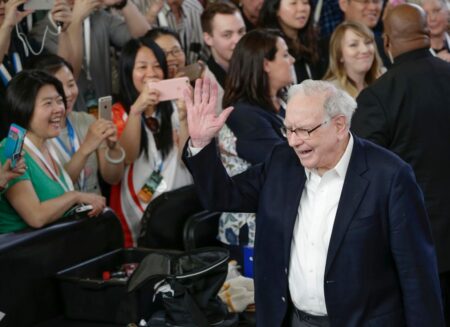Each year, Forbes publishes a ranking of the world’s top executive search firms. It’s a familiar roll call: Spencer Stuart, Heidrick & Struggles, Russell Reynolds Associates, names that dominate high-stakes talent conversations from Wall Street to the City of London. But what these firms are seeing behind the curtain is more telling than the list itself. Across dozens of C-suites, boardrooms, and candidate shortlists, a quiet revolution is reshaping what it takes to lead in financial services.
This is not another AI hype story. Nor is it a lament about the talent war. It’s a deeper insight into a structural talent mismatch, one that will determine whether today’s financial institutions can reinvent themselves or quietly become irrelevant.
The Talent Mandate Has Changed, But the Supply Hasn’t
Chris Davis is a Managing Director at leadership advisory firm, Russell Reynolds Associates. He leads the Financial Services, Technology, and Private Equity Practices, and co-leads the firm’s global Fintech Practice. He puts it bluntly: “Every function is being impacted by AI. You can’t hire a senior leader who isn’t tuned into what’s happening.” But financial services firms don’t just need technologists. They need what Davis calls tech-forward, banking-pragmatic leaders. These are people who can think in agile cycles, translate data into decisions, and still navigate the regulatory chokeholds that define the industry.
The problem? There aren’t enough of them.
George Craft, who leads the Global Financial Services Practice at Spencer Stuart, confirms that demand far exceeds supply. “The need for people who can lead a tech-driven transformation at scale exceeds the availability of leaders who’ve done it,” he says. “It’s like asking for IPO experience when there haven’t been many IPOs the last few years.” In other words, experience isn’t the proxy it used to be.
Instead, firms are shifting to capability-based hiring. Can a candidate learn faster than the rate of change? Can they iterate? Can they absorb new information, discard old assumptions, and still lead with clarity? These are the traits that predict transformation success – not a tidy resume.
From Unicorns to Trade-offs: The End of the Perfect Candidate
Dominique Fortier, Global Managing Partner and Financial Services Practice Lead at Heidrick & Struggles offers a sobering view: “Everyone wants a unicorn, but in reality, it’s about trade-offs.” Boards are demanding AI strategies, not just pilots. Yet even the best search firms can’t conjure a candidate with 25 years of AI leadership. That discipline didn’t exist five years ago.
As a result, Fortier’s firm focuses on guiding clients through what she calls a “pattern of discovery.” That means recalibrating expectations, considering cross-industry hires, and weighing technical chops against leadership gravity. For large banks, culture fit and influence still matter more than code commits.
What’s emerging from this process is not a new archetype, but a new leadership geometry: the T-shaped executive. These are leaders with broad cross-functional understanding and a sharp vertical spike in technology, often self-taught. Davis explains, “They’re fluent in data, adaptive under pressure, and capable of driving AI-enabled operating models without breaking the organization in the process.”
Agentic AI and the Rise of Strategic Fluency
Davis has seen a shift in language, too. “Agentic AI” is the phrase that keeps popping up in briefs. He continues, “Agentic AI refers to autonomous systems with agency, the ability to make goal-directed decisions and take proactive actions, enhancing leadership roles in decision-making and execution.”
That’s raising the stakes for C-level hires. Suddenly, leaders are expected to understand not just what AI can automate, but how it redefines workforce design, governance models, and customer interaction. Davis warns that “strategy” in financial services now means placing the right bets on technology, and knowing when not to.
That means the CEO doesn’t need to be a coder, but they do need to understand resource allocation across AI priorities. The same goes for CFOs, CROs, and CHROs. “We just pitched a search for an HR AI lead,” Fortier adds.
Tech-Forward, Bank-Tested: The Winning Candidate Formula
Who gets hired in this environment? Increasingly, it’s people who have toggled between tech and traditional finance.
“Our clients want someone who started in banking and then moved into agile, tech-forward environments,” says Craft. “They’re rare and they’re incredibly valuable.” That dual fluency is becoming the golden ticket: grounded in risk and regulation, but unafraid of building toward what’s next.
But for candidates without that dual background, hope isn’t lost. The most valuable signal is not pedigree, it’s trajectory. Leaders who have delivered systems upgrades, led org redesigns, or embedded data into decision-making, even outside fintech, are suddenly more interesting than flashy startup veterans.
“Innovation in financial services doesn’t mean you built the next Stripe,” Craft explains. “It means you’ve transformed how a legacy business operates. That’s the hard part.”
Rebuilding the Team, Not Just the Org Chart
One common misconception is that hiring a Chief AI Officer will fix everything. The reality is more nuanced. Financial services firms are re-architecting leadership teams to ensure tech understanding permeates every function.
Tech is no longer a service layer, it’s part of the core value proposition. “You can’t run an investment bank, commercial bank, or insurance platform today without fluency in tech product thinking,” says Craft. “It’s gone from optional to existential.”
That’s why leading firms are stacking their teams with diverse thinkers: one who understands regulatory nuance, another who can translate that into digital workflows, and a third who sees around corners using AI-driven insight.
It’s a mosaic, not a monolith.
What This Means for the Next Generation
For aspiring leaders, the message is clear: diversify your experiences. Fortier says the most successful CXO candidates today “have taken on different roles in different types of organizations. If you’ve only ever worked one way, it’s hard to demonstrate agility.”
Curiosity, resilience, and learning orientation are now more important than any single credential. That may sound like HR fluff, but the hiring data backs it up. Candidates who thrive across boundaries, not just functions, but industries and cultures, are the ones who get the job offers.
There is no blueprint for what’s happening. Financial institutions are rewriting their leadership playbooks in real time, with search firms acting as co-authors. That’s why the work of executive search is now less about finding a name and more about shaping a narrative.
It’s also why, despite the overwhelming focus on AI, the human element still matters most. Davis says it best: “You can build a strong tech strategy. But unless the board backs it, the C-suite enables it, and the culture absorbs it, it won’t stick.”
Financial services are at a crossroads. The firms that win won’t be the ones with the flashiest apps or biggest budgets. They’ll be the ones that build teams where innovation is not a department, but a default.
For more like this on Forbes, check out: As Warren Buffett Steps Down, What’s Next For Financial Leadership? and What Discord CEO’s Departure Means For Finance Professionals.
Read the full article here











